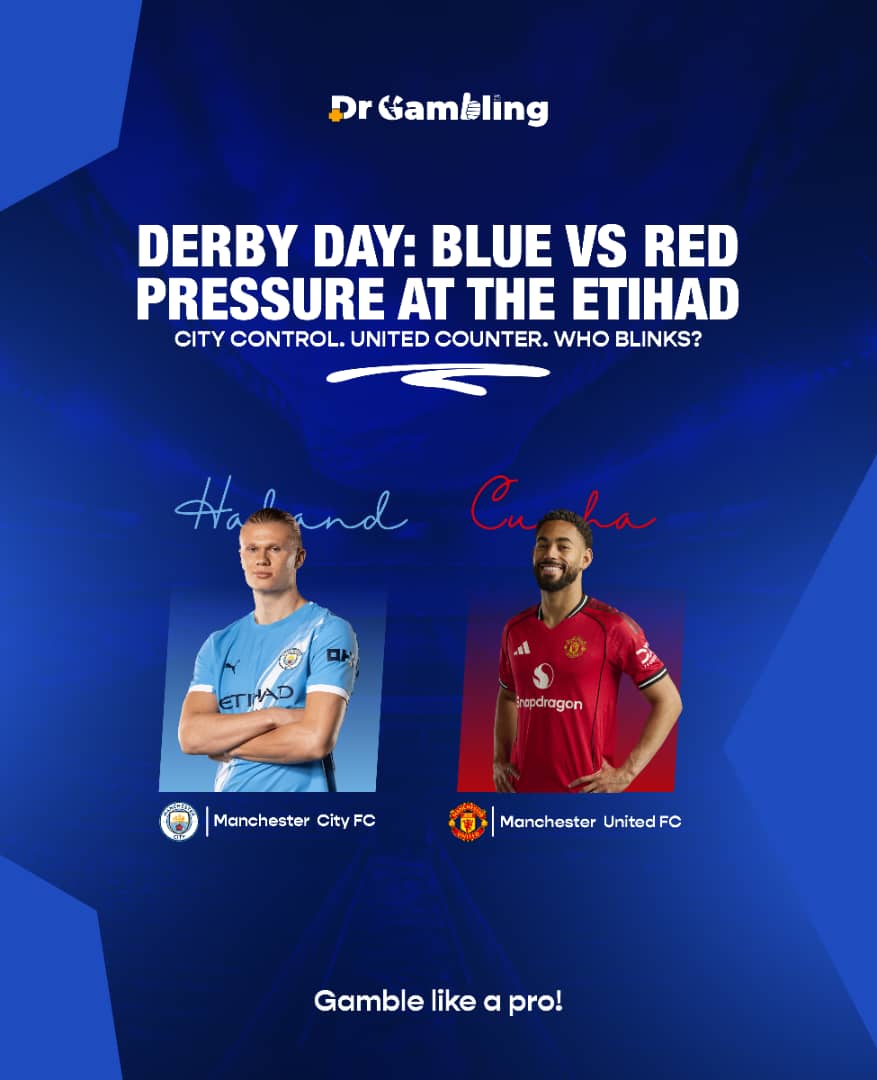Derbies write their own scripts. On Sunday at the Etihad, Manchester City want control, Manchester United want chaos, and somewhere in the middle this game will flip. The stakes are simple: three points that feel like six, and bragging rights that last for weeks.
City’s Approach
City’s plan still begins with patience and ends with punishment. They will settle on the ball, stretch the pitch, and feed the spaces that appear when you chase shadows for too long. Phil Foden is now the compass between the lines — always checking his shoulders, always turning toward goal. Every time he finds half a yard, the tempo rises and defenders have to make choices they don’t want to make.
Up front, Erling Haaland remains the difference. He doesn’t need five chances; one clean delivery is enough. The puzzle for United is the same as every opponent’s: track his run without leaving a lane for the late arrival. City can also turn to direct speed if they want to bend the game vertically. Omar Marmoush adds that straight-line threat — sprints into channels that drag centre-backs wide and open cut-backs for runners from deep. If Pep leans into that look, the derby becomes a sprint test as much as a passing test.
Behind the ball, City will try to smother transitions at the source. Their “rest defence” — the two or three players parked behind the attack — is designed to kill counters before they start. The more they keep United in their own third, the more corners, cut-backs and second balls they’ll create. The crowd feels that pressure too; the noise climbs with every recycled attack.
United’s Approach
United do not need to control the ball to control the story. Under Rúben Amorim, the idea is clear: stay compact, break clean, and run hard into space when the turnover comes. That first pass after the steal matters more than anything else. If it reaches the right feet early — Bruno Fernandes on the half-turn, a wide runner already sprinting — United can turn one duel into a two-pass chance.
The shape may flip between a back four and a back three depending on phases, but the principles are consistent: protect the middle, show City outside, and spring through the channels. United’s wide players are there to threaten the space behind City’s advanced full-backs. Even if they only get three or four breaks all game, those moments can be enough if the decisions are sharp.
What’s at Stake
City need the derby bounce — a big performance, a clean message that they still own the rhythm of this league. United need proof they can hurt a top side away from home. A win resets chatter on both sides; a defeat turns minor issues into headlines.
Players to Watch
- • Phil Foden (City): The bridge between patient pressure and end product.
- • Erling Haaland (City): Punishes even half-mistakes in the box.
- • Bruno Fernandes (United): First-touch decisions that flip defence into attack.
- • United’s right-sided runner: The outlet when City’s left-back steps high.
The X-Factor
Set pieces. Derbies often swing on a scruffy second ball. City will rack up corners if they pin United deep; United will love any long throw or early free-kick that lets them plant bodies in the box.
How It Breaks
If City keep finding Foden between the lines, the goal will feel inevitable. If United disrupt that pocket and turn the first pass forward cleanly, the Etihad will hold its breath as the counter races toward goal. Watch for City’s winger versus United’s full-back on the far side — that back-post run is a derby classic.
Prediction
Manchester City 2–1 Manchester United. Territory versus transitions. City’s pressure finally tells after a long spell of blue shirts, but not before United land a scare.
Conclusion
Expect noise, fouls, stoppages, and one moment that defines the day. The derby won’t pick the champion in September — but it will set the mood, and in this city, mood is everything


